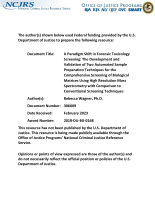Characteristics of officer-involved vehicle collisions in California
Journal
Policing: An International Journal
Date Published
August 2015
Agencies
NIJ-Sponsored
Publication Type
Research (Applied/Empirical)




